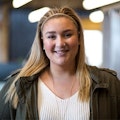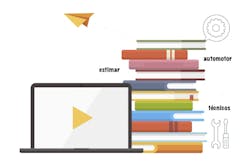According to the Pew Research Center, Spanish is “by far the most spoken non-English language” in the U.S., with more than 37 million speakers—a 233 percent increase since 1980.
As the demand for easily accessible education to be available for English and non-English speakers rises, I-CAR, one of the main educational streams for the collision repair industry, is catering to just that. As the entity undergoes a complete update of its curriculum, translating its required courses to Latin-American Spanish for Spanish speakers is a big priority.
Josh McFarlin, director of curriculum and product development for I-CAR, shares some information on the decision and implementation process.
What prompted I-CAR to have its courses available in Spanish?
We’ve tested the waters quite some time before, but we didn’t necessarily have everything else lined up to be able to support that approach.
What we’ve been doing historically is if a non-English speaking student wants to bring someone to play the role of translator, we’ll allow someone else to sit in and effectively translate the class for the student.
We’ve got a handful of instructors across the country that, if there is a demand, they will teach a class in an alternate language, but that’s more of a regional thing based on whether or not there's an instructor available, etc.
What really prompted it was our industry segment advisory council (The ISAC group). It’s something we started doing five years ago. We’ve got 72 members that are spread out across the country in regional groups of 12, and then one national group that has members from each of those regional groups.
Those members are all key players within the industry that we recruited largely because they either were neutral about I-CAR or, in many cases, kind of anti-I-CAR, because we wanted a group that could come in and give us that hard feedback that we could then turn into direction.
One of the feedback items was the need for translated courses.
The ISAC group shop owners said they have technicians that are having a hard time taking courses. And because they’re having a hard time, instead of having one technician in the course, they have to send another tech who is bilingual to the course, as well. There is a concern of potentially compensating two people to take one class.
It comes back to what the right thing to do for our customers is, even if it’s a small number of customers in the grand scheme of things, and we felt that the right thing to do was make the curriculum available in Spanish, as well.
Obviously Spanish isn’t the only language, and even in Spanish, there is more than one dialect. We recognize that Spanish was the leading need with the greatest number of technicians out there based on the feedback and some data we were able to collect from the U.S. Bureau of Labor Statistics and census data.
What is the current status of the curriculum?
We’re rebuilding all of our curriculum from the ground up. In making improvements, we saw that as an opportunity to do some things that would make it easier for translation to happen at a later date.
When we decided to work with a vendor to help augment some of the development staff that I’ve got, that vendor also has the capability to help with the translation work. It just made sense to get it all done at once and tackle both projects at the same time.
We’re both building courses and as each course gets finished in English, it’s then being turned over to the translation team.
We did research work in 2014, where we conducted analysis of what actually needs to be taught. What does the learner need to know and what do they need to be able to do to be considered successful?
In this case, we’re talking about estimators, refinish technicians and non-structural technicians and so on. What does an estimator need to know and be able to do in order to be considered a good estimator?
We gathered our working group of estimators together and spent two weeks with that group over a period of a couple months asking those questions. What do you need to know and what do you need to be good at?
Along the way, we’re following the ADDIE model (analysis, design, development, implementation and evaluation), which is a standard curriculum development model.
We started to rebuild the curriculum in late 2016 and the planned relaunch date is January 2019.
Will all of the courses be available in Spanish?
All of the courses that are required to meet professional development requirements will be available in Spanish.
There are other classes that are electives, in which, out of the gate, we are not translating.
Are there plans in the future to expand into different languages?
It’s certainly something we’ve considered. Identifying what the next language will be is pretty subjective. I hear about Vietnamese, Russian, Mandarin, Portuguese. These are all dialects that come up with some regularity.
What I expect will happen is that as we look into opportunities to expand globally and internationally, it will become the driver for what is next. As soon as we’re done with Spanish, we will go into language X as a plan.
It’s going to be more reactionary based on the needs of the industry and the needs of our growth.
Are there any obstacles with translating?
One thing to note about the translation approach is that we are purposefully not translating every word.
Some of the technical terms, like “rocker panel” or “B-pillar” or “tail light” are trickier terms to translate, especially across multiple dialects. Those are more effective based on the regional dialect and more affected by slang.
In many cases, we’re leaving them in their English form. In a technical environment, we’ll listen to some of the conversations that will happen, when there is multiple languages being spoken. Often times, the common terms are being spoken in their native language but the technical terms are being left in English. It’s easier that way.
When we did our benchmarking, we found that a number of other companies that did technical training translation, followed the same approach.
About the Author

